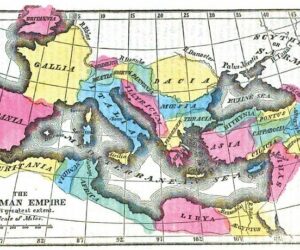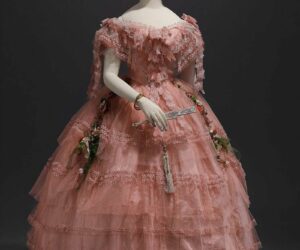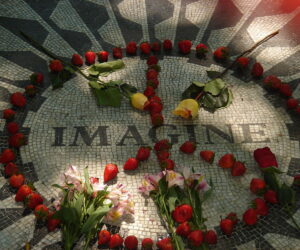
Bad Romance: The Romantic Era in Fashion, Volume Two
1 – Welcome, intrepid readers. The week’s #threadtalk is the 2nd half of our dive into the wild world of #Romanticism. 🎀🌹🎶🎨
And it’s all about sex, drugs & art, fueled by good ol’ imperialism (but make it #fashion). But first, a refresher:

2 – We’re begin tonight in 1836 w/ Charles Darwin, who returned to England in this year.
Though we owe a great deal to Chuck, for all his study, for all that, he still determined women intellectually inferior. Not to mention his support of his eugenicist cousin, Francis Galton.


3 – For our 1836 gown, we have a lovely green and floral number. Francis Galton might have seen this gown on the women he rated across England as most beautiful to ugliest during his eugenics research. A bit of calico cotton, via LACMA.

4 – In 1837, Louis Daguerre produces his first daguerreotype (printed on silvered copper plate). However, it isn’t until 1839 that it’s shared with the public, as he tries to get it sold to private investors first. It’s a $$$ process.
Photography, eventually rocks the world.

5 – This 1837 wedding gown oozes Romance. Truly, I must run through the moors as a jilted bridal ghost!
Creamy white muslin, delicate floral details, Empire influences still echoing… the last gasp of voluminous sleeves before Victoria begins her grasp on fashion. via the Met.

6 – 1838, the forced removal 16K Cherokee, Chickasaw, Choctaw, Muskogee (Creek) — up to 4K died.
It was the last phase of the Trail of Tears; even though Van Buren is president, he did not stop it. Humidity in the South=cotton growing climate! Plus, boosted slave trade.

7 – For 1838, I chose this dress because it reminds me of the mountains here in the Autumn. As someone who lives on occupied Cherokee land, I think about it often. I love the mountains of North Carolina, but they’re not mine to love. They’re stolen.
#fashionhistory, folks.

8 – 1839 doesn’t go easy. It marks the beginning of the First Opium War against the Qing Dynasty in China. East India Co. & other merchants now smuggle 40K chests into China yearly, addiction rises. Cotton fields turn to opium fields, fueling Western appetites for silk & tea.

9 – 1839 silk makes sense, non? Given the context. You start to see the fullness about to go big time in the 40s, but the remnants of the puffy sleeves. Plus, some lovely ruching and princess style there on the bodice. Lovely pleating, too. Mantle pairing 💯. From the V&A.


10 – 1840.
Okay fine.
Queen Victoria & Albert get married. She wears white. She’s not the first one to do so. But Vicky does become a worldwide fashion sensation.
(Even though she’s an Imperialist monster. Empress of India 🤮)

11 – 1840s entry is NOT what imagine Vicky wearing, but rather what I’d like to see on Albert. How about this silk dressing gown? Is it not absolutely extra? I usually love ostentatious dressing gowns, but my brain can’t quite put this one together.

12 – So, 1841.
Let’s talk about DRUGS. They’re everywhere at this point. It’s morphine! It’s chloroform! Women get them for *anything*. Coleridge is just the beginning. All kinds of experimentation is going on, being discovered every year…
How about lead & opium, anyone?


13 – 1841(-1845) gown – whilst tuberculosis chic was also the rage, morphine was a common treatment. You, too, could manage a lithe little figure in pale silk, skin flushed a hectic pink, curls against your fair forehead. Easy to picture in this gown, huh?

14 – 1842 re: tuberculosis: that’s when things started going bad for Frédéric Chopin. The virtuoso composer and pianist complained, “I have to lie in bed all day long, my mouth and tonsils are aching so much” in February of that year after a concert.

15 – 1842’s design is actually from 1839, but it’s of Franz Liszt, Chopin’s friend and sometimes rival, because he was a serious hottie.
Also, if this is starting to sound familiar, it’s also because it’s the subject of the 1991 film IMPROMPTU.

16 – In 1843 George Sand–i.e. Aurore Dupin (and Chopin’s ex) published CONSUELO, one of the over 40 novels she wrote in her lifetime.
A wildly popular writer in her time, praised by Victor Hugo, she wore menswear regularly (without a permit). Portrayed by Judy Davis at Left.


17 – Bonus picture of Chopin and Sand together, painted by Eugene Delacroix. Like, real life historical fan fiction. Except it wasn’t!
Victor Hugo on Sand’s radical dress & behavior: “it is not my place to decide whether she is my sister or my brother.”

18 – 1843’s gown reminds me of the gown in the film that George wears when she femmes it up.
This new shape just OWNS the rest of the 1840s, too. All the triangles, all the dropped shoulders again. And the full skirts just go full princess.

19 – In 1844 Clara Schumann travels to Russia w/husband Richard; she is also a celebrated pianist & composer. However, unlike him, she has four children in a row over the next five years.
She struggles to keep composing through family tragedy, having & losing children.

20 – 1844’s dress is delicate, but has some good structure. Again, see the triangles? I like that the print here is vertical, which gives it some length, and then the scalloping on the detail along the pattern, as well. A neat use of the pattern.

21 – 1845, the first Anglo-Sikh War begins. Guess who the Anglos are? The British East India Company💩! The Sikhs were a formidable foe & historians agree it was a very close call. Sadly, Sikh’s lost. I recommend this video for an overview:
22 – And of course, 1845 brings the irony of wearing shot silks & patterns still rooted in patterns from the very places the East India Company is still at war with.
Because that’s Imperialist appropriation for you!
Personally, love the fabric. Am not a fan of gown.


23- 1846. What about sewing machines?
What about them? Well, like typewriters, there many.
Elias Howe patented his (scandalous!) invention this year, hoping to make enough $ to get out of poverty & save his dying wife. He didn’t quite make it, but eventually made some profit.

24 – This 1846 silk number mirrors almost a calico look, but that incredible ruching situation is some incredible work. I imagine it’s made easier with sewing advancements we get in the future.
It’s a little paper bag-ish? But I can get with it.


25 – 1847. Charlotte Brontë publishes Jane Eyre as Currer Bell. It was called immoral, coarse, anti-Christian & reviewers could not even entertain the idea that its controversial prose could possibly be written by a woman.
I got news for y’all!
HAHAHAHA. ::wipes a tear::

26 – Okay, so 1847 is American, I realize, but I struggle in the late 1840s, and I actually like this one. The calico, the bell sleeves, the folding… I mean <3
It’s a very pretty gown. I know it’s a little, uh, optimistic for with Brontës, but like, this thread is BLEAK.

27 – 1848, like 1830, the West collectively lost its shit again. Revolution resounded!
In France, Brazil, Germany, Hungary, Switzerland & more!
Louis-Philippe of France abdicated, and after a bit of a shuffle, they ended up with…
::checks notes::
Napoleon III.

28 – Mourning the French lack of creativity in 1848, is this gown. Which, honestly, almost could pass for a 1950s gown. Especially with those gloves.
I love the way the stripes work, too, for that elongation and play of light against the black. Like, I’m sad but I have whimsy.

29 – In 1849, Charles Dickens brings us David Copperfield.
Listen. People have tried to defend this dude for ages. A “man of his time.” Blaming feminists for trying to cancel him. It goes on.
TL;DR he left his wife (below) after 20 years & 10 kids for an 18 year old actress.

30 – Dickens was a STAR. He & his agent curated his persona. He burned letters & correspondence. For years, people excused his behavior with Catherine (his wife) because it seemed generous.
In 2019, new letters showed he’d tried to *commit her* to get out of their marriage.

31 – The story is not unique. But apologists are exhausting. We even know that Dickens own kids were not super fans…
Anyway. That was later. Gotta question patriarchy. Question the record. What remains isn’t always the truth.
Here’s another… interesting dress. 1846-9ish.


32 – 1850 concludes with another George. George Eliot, who coined the term “chintz.”
Oh, and she was also one of the most celebrated writers of the Victorian era. Her name was Mary Ann Evans. In this picture, she was 21, the year she moved to London.

33 – So for 1850, we bring this gown, which sums it all up. Chinese silk. A classic early Victorian/late Romantic shape, yet with the exoticism of Asian dress. Made in England, though, of imported silk from, likely, those smuggled opium trades.
Did young George know?

34 – So, let’s get to some sources.
1836 – Charles Darwin
https://www.ncbi.nlm.nih.gov/pmc/articles/PMC2672903/
https://www.theguardian.com/science/2021/feb/13/how-should-we-address-charles-darwin-complicated-legacy
https://www.nytimes.com/2021/02/05/books/review/charles-darwin-harriet-martineau-women.html
https://collections.lacma.org/node/214436
https://blogs.scientificamerican.com/cross-check/darwin-was-sexist-and-so-are-many-modern-scientists/
1837 – Louis Daguerre
https://en.wikipedia.org/wiki/Louis_Daguerre
https://en.wikipedia.org/wiki/Daguerreotype
http://www.daguerreobase.org/en/knowledge-base/what-is-a-daguerreotype#:~:text=The%20daguerreotype%20was%20the%20first,on%20a%20silvered%20copper%20plate.
35 –
1838 – The End of the Trail of Tears
https://www.archives.gov/research/native-americans/cherokee-removal
https://en.wikipedia.org/wiki/Cherokee_removal
http://nationalhumanitiescenter.org/tserve/nattrans/ntecoindian/essays/indianremoval.htm
https://en.wikipedia.org/wiki/Cherokee_removal
1839 – The First Opium War
https://www.soas.ac.uk/gallery/opium-silk-and-the-missionaries-in-china/
https://en.wikipedia.org/wiki/First_Opium_War
http://visualizingcultures.mit.edu/opium_wars_01/ow1_essay01.html
http://projects.mcah.columbia.edu/nanxuntu/html/economy/
36 –
1840 – Queen Victoria & Albert
https://www.mentalfloss.com/article/597938/prince-albert-facts
https://en.wikipedia.org/wiki/Legacy_of_the_Great_Irish_Famine
1841 – Drugs!
https://www.bl.uk/romantics-and-victorians/articles/representations-of-drugs-in-19th-century-literature
https://www.jstor.org/stable/41679386
1842 – 43 – Sand, Lizst, Chopin
https://en.wikipedia.org/wiki/Consuelo_(novel)
https://en.wikipedia.org/wiki/Fr%C3%A9d%C3%A9ric_Chopin#Franz_Liszt
https://www.mtholyoke.edu/courses/rschwart/hist255/at/georges.html
https://en.wikipedia.org/wiki/Fr%C3%A9d%C3%A9ric_Chopin
37 –
1844 – Claire Schumann
http://mural.maynoothuniversity.ie/5203/1/Claire_Flynn_20140711152541.pdf
1845 – The Anglo-Sikh War
https://en.wikipedia.org/wiki/First_Anglo-Sikh_War
https://www.youtube.com/watch?v=qTfUKkkOEEY
https://www.allaboutsihs.com/sikh-history/historical-events/historical-sikh-events-the-first-anglo-sikh-war/
1846 – Sewing Machines
https://www.smithsonianmag.com/arts-culture/the-many-many-designs-of-the-sewing-machine-2142740/
1847 – Charlotte Brontë
https://en.wikipedia.org/wiki/Jane_Eyre
38 –
1848 – Another revolution
https://en.wikipedia.org/wiki/Napoleon_III
https://en.wikipedia.org/wiki/Revolutions_of_1848
1849 – Dick(ens)
https://en.wikipedia.org/wiki/Charles_Dickens
https://alittlebitofdickens.wordpress.com/research-page-1/
https://www.smithsonianmag.com/smart-news/newly-analyzed-trove-letters-charles-dickens-180971545/
https://www.theguardian.com/books/2012/nov/23/great-charles-dickens-scandal-michael-slater-review
1850 – George Eliot
https://en.wikipedia.org/wiki/George_Eliot
39 – Whew! Thanks for joining me for #threadtalk. #Romanticism is no joke & neither is the legacy we leave and benefit from.
I learn so much by just following the thread. It’s not always pleasant, but it’s necessary.
Thanks, thread heads. See you next week!
40 – I do have a tip jar now — link in my profile!
(Fuel my coffee and ink habit, no obligation, but people have asked).
And October is going to be all spooky themed!
Originally tweeted by 🦇 Natania Barron 🦇 (@NataniaBarron) on September 27, 2021.





